21 Sep Khirkee Masjid
A Stunning Medieval Wonder Right Next to Saket’s Malls
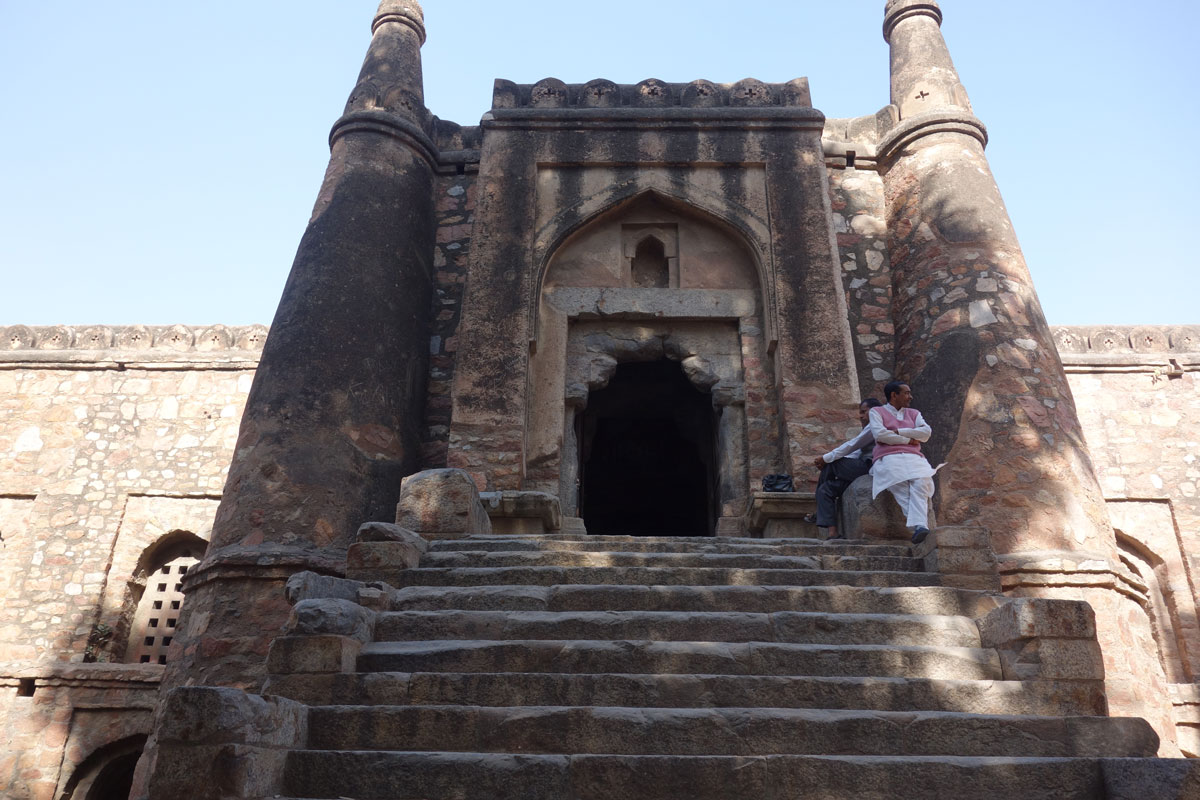 The Imposing Fort-Like Entrance to Khirkee Masjid Just around the Corner from Saket’s Malls
The Imposing Fort-Like Entrance to Khirkee Masjid Just around the Corner from Saket’s Malls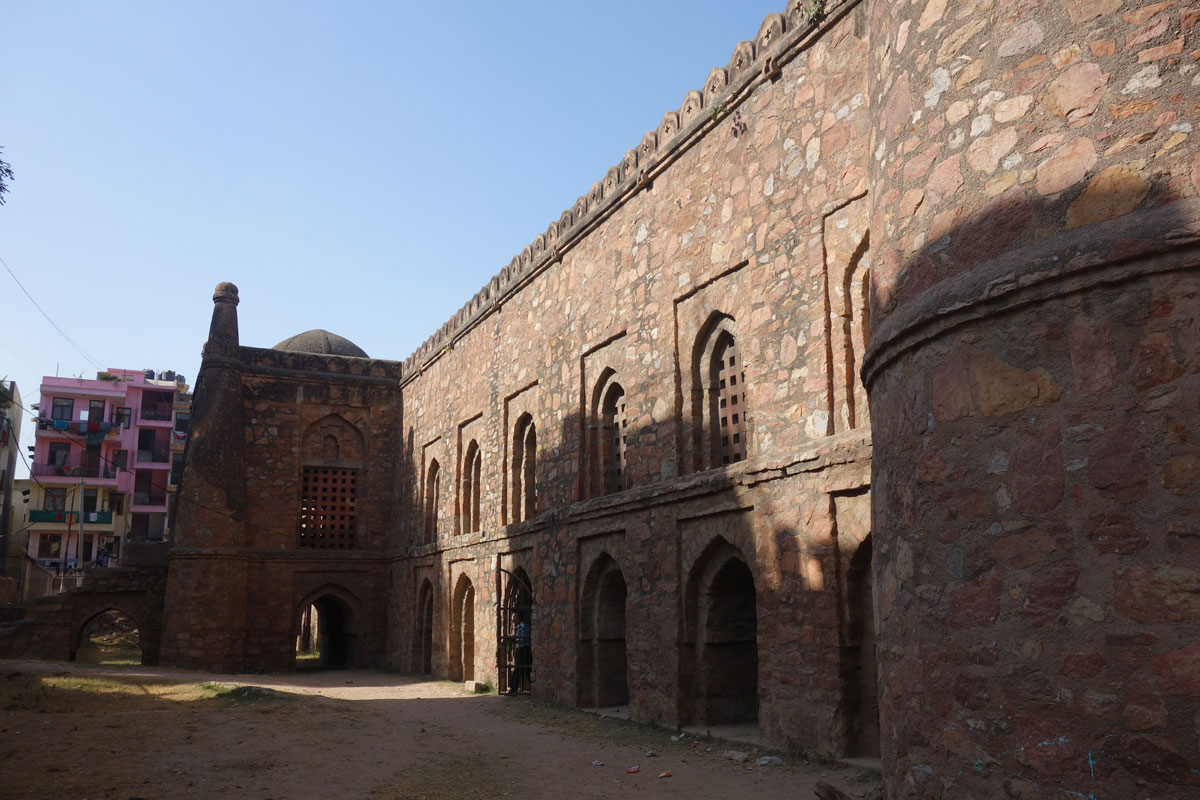 Khirkee Masjid’s Solid Walls and Bastions Typical of the Tughlaq Era
Khirkee Masjid’s Solid Walls and Bastions Typical of the Tughlaq Era 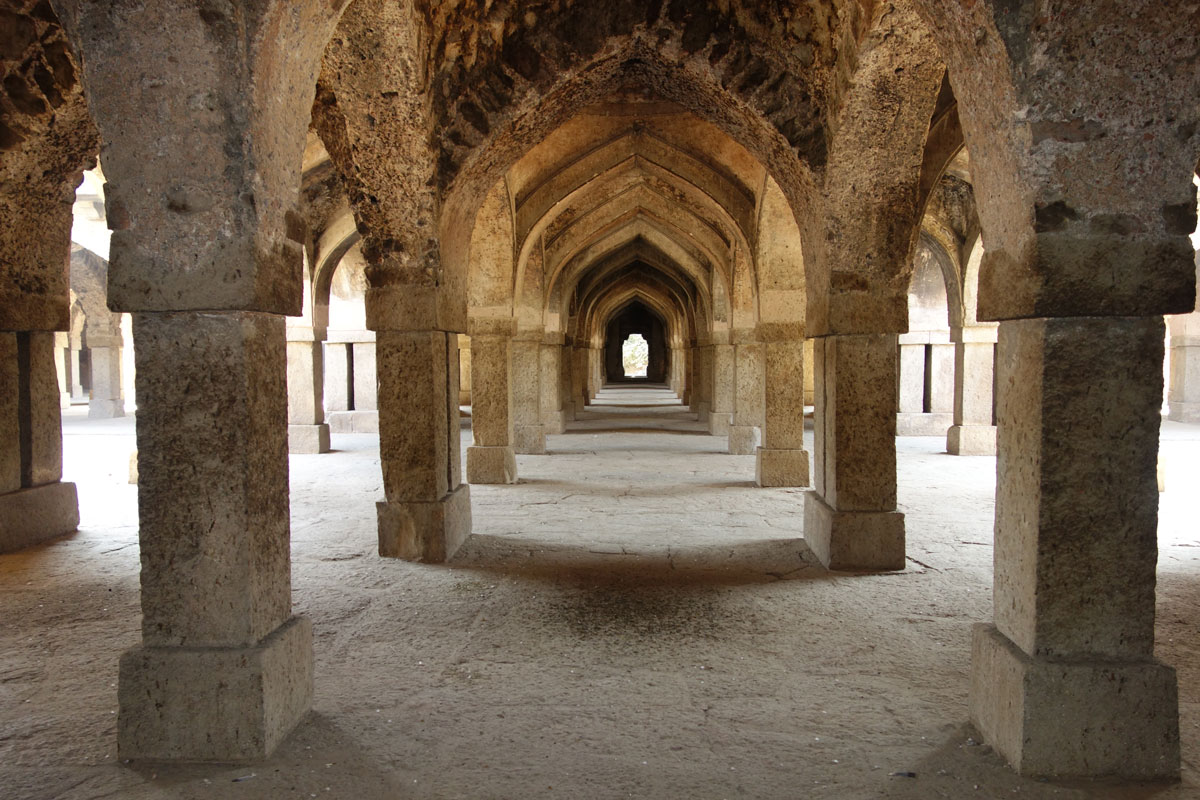 Inside the Khirkee Masjid, a Line of Symmetrical Pillars Stretching out on All Sides.
Inside the Khirkee Masjid, a Line of Symmetrical Pillars Stretching out on All Sides.
 Interior Courtyards; Partly Dark and Spooky, Partly Bright and Cheerful.
Interior Courtyards; Partly Dark and Spooky, Partly Bright and Cheerful.
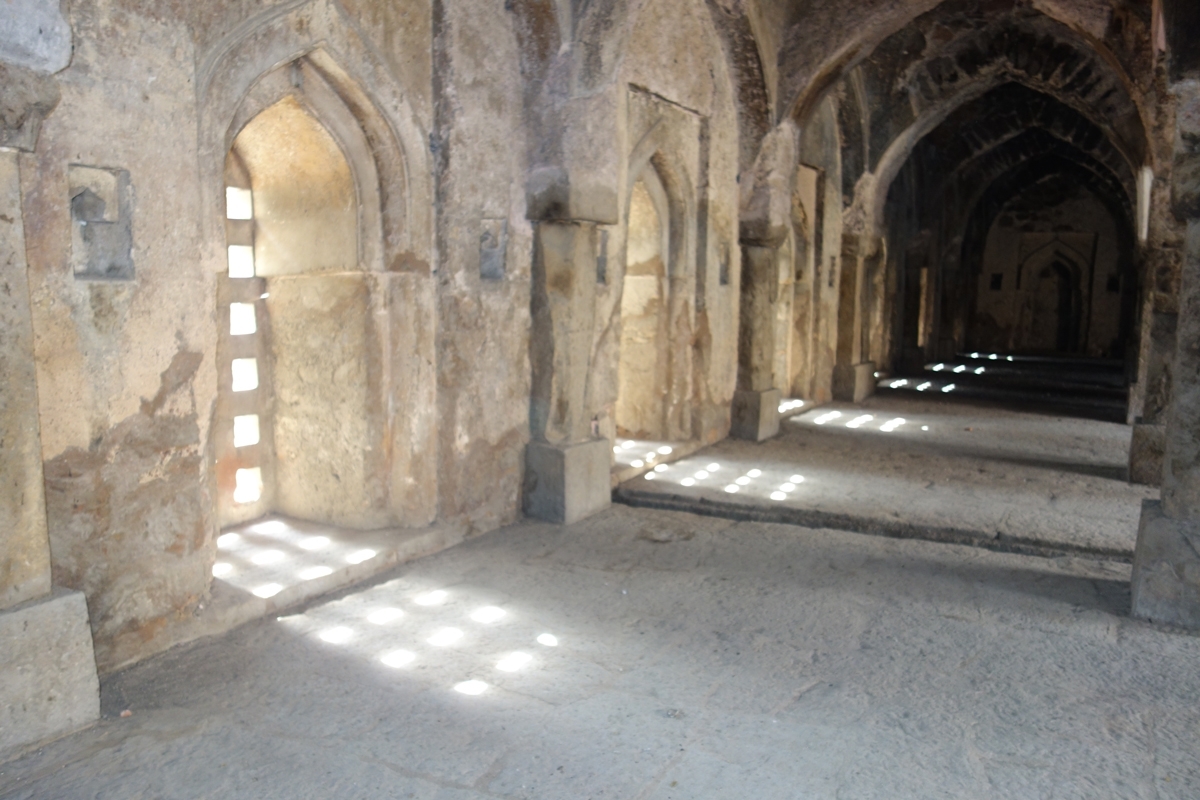 The famous jaali khirkees let the sunlight screen in
The famous jaali khirkees let the sunlight screen in
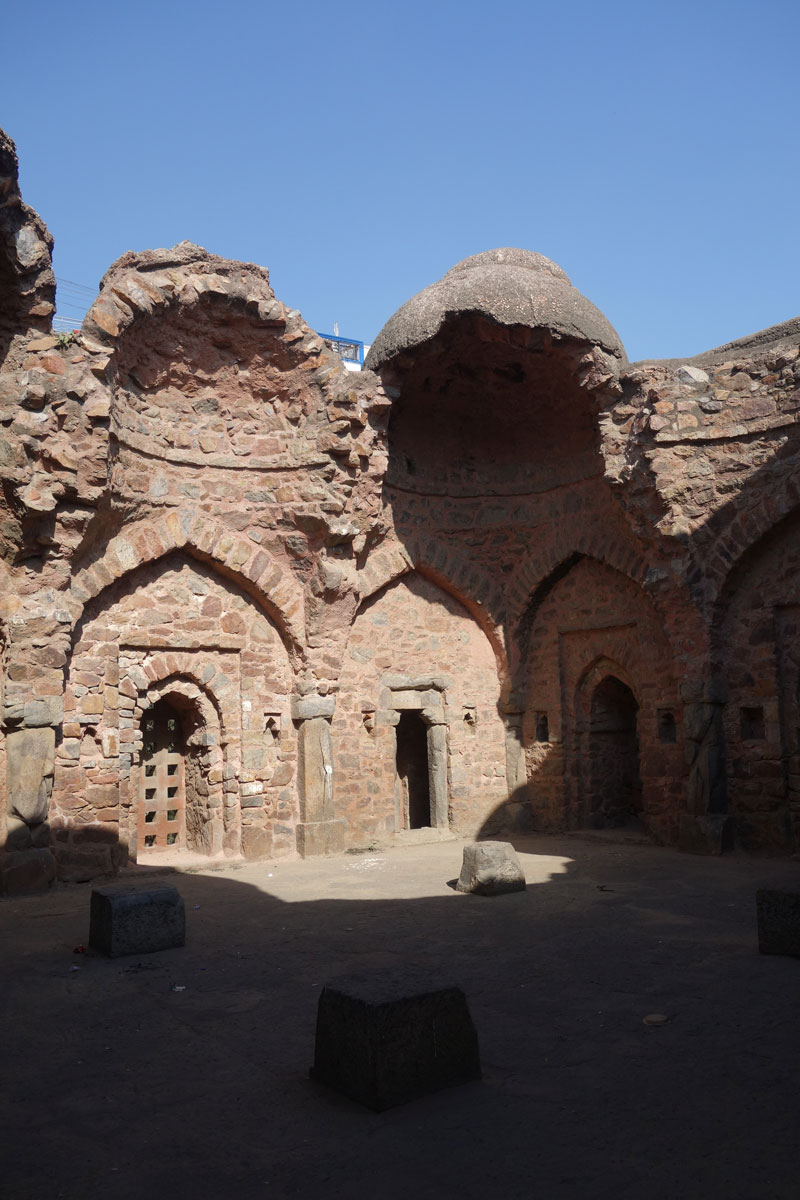 A Collapsed Portion of the Roof, Sadly Too Late for Restoration
A Collapsed Portion of the Roof, Sadly Too Late for Restoration
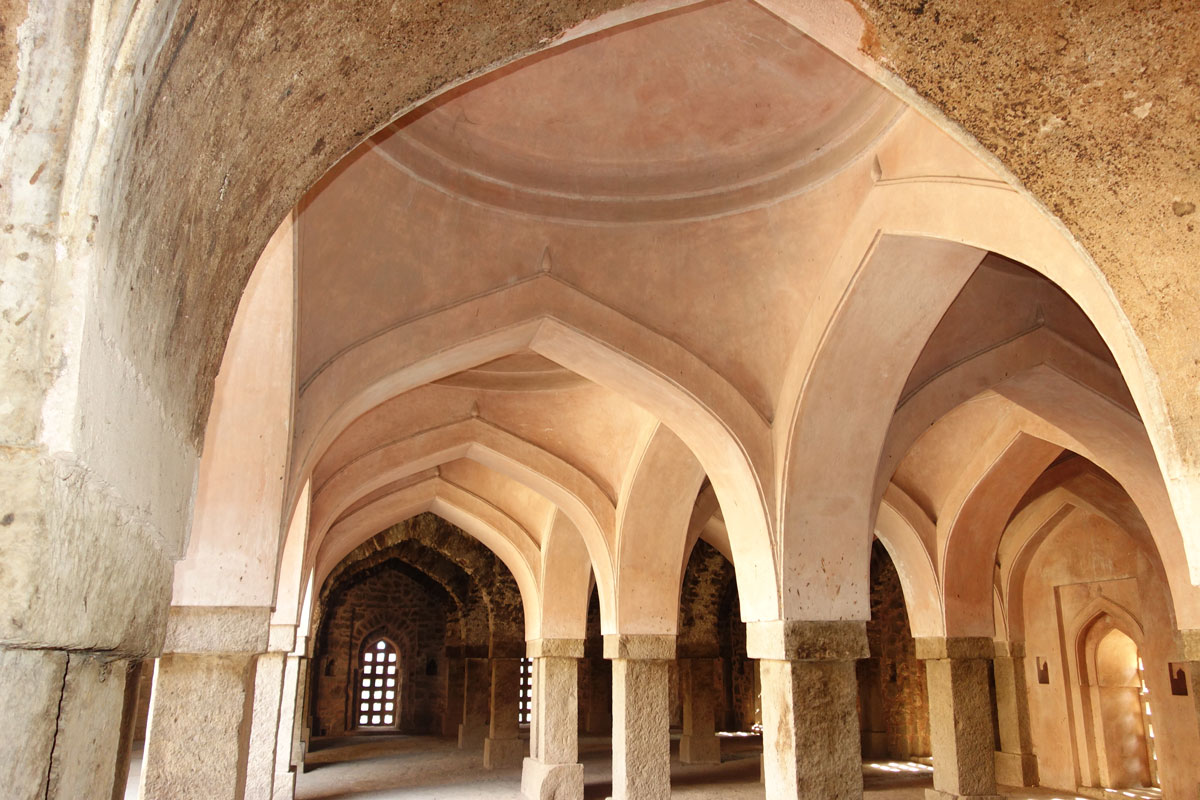 Pink Colored Lime Mortar Used for Restoration….and Then Thankfully Stopped
Pink Colored Lime Mortar Used for Restoration….and Then Thankfully Stopped
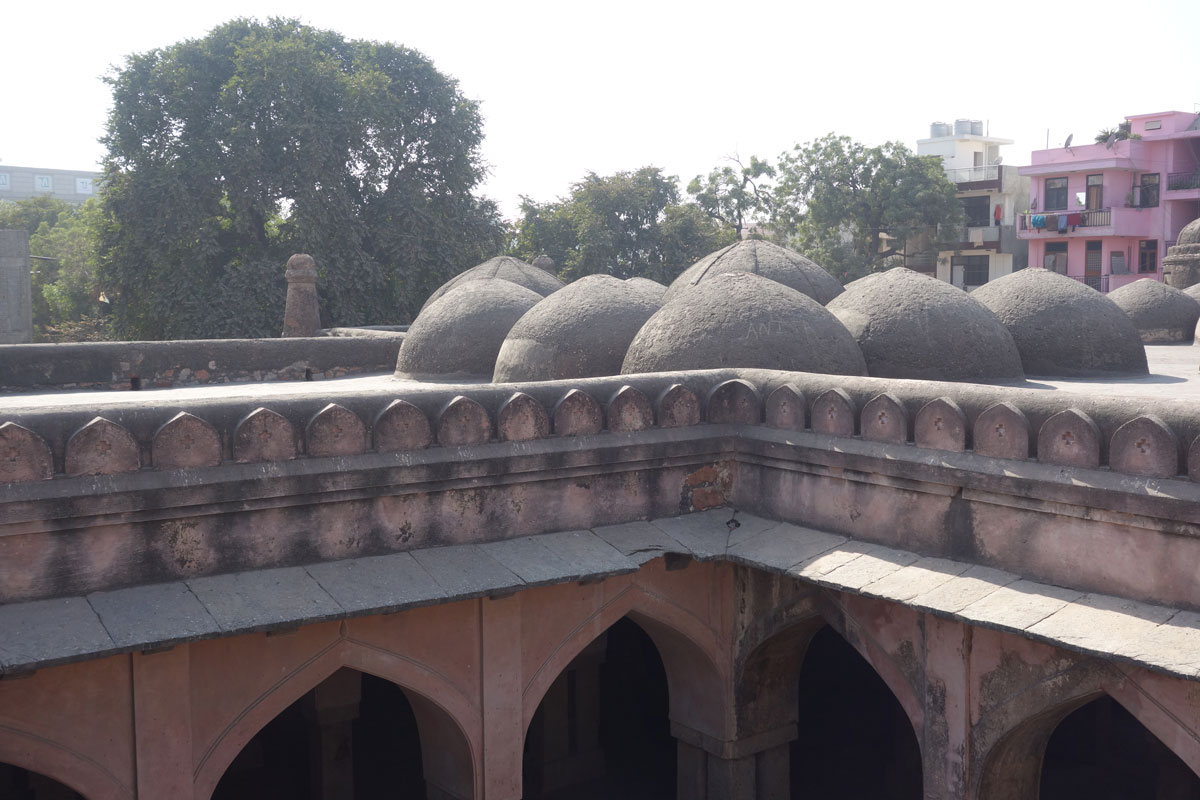 A Canopy of Eighty-One Small Domes on the Roof Clustered Together like Pigeons
A Canopy of Eighty-One Small Domes on the Roof Clustered Together like Pigeons
The Builder of Khirkee Masjid
Khirkee Masjid was built by Junan Telengani, the wazir or prime minister of Sultan Feroz Shah Tughlaq. Though Feroz Shah himself has the high reputation of being a master builder (his creations Feroz Shah Kotla and Hauz Khas are still Delhi landmarks), Junan Telangani as his wazir was really no less.
Junan Telangani, – as the name suggests – was originally from Telangana in the south of India. His father was Yugandhar, the Hindu commander of Warangal Fort, who was defeated by the Tughlaqs in battle. After his defeat, Yugandhar joined forces with the Tughlaqs, came to Delhi and converted to Islam taking the name Maqbul Telangani.
Maqbul soon became Sultan Feroz Shah’s most trusted aide and his prime minister. Whenever Feroz Shah was away on long military campaigns, it was Maqbul Telangani who would handle the administration of Delhi. He became famously rich, and was said to have a “yearly income of thirteen lac tankhas apart from expenses for his army and servants and further allowances for his sons and sons-in-law”.
So close was Feroz Shah to Maqbul Telangani that he made the post of prime minister hereditary, and so the son Junan Telangani succeeding his father as wazir.
Feroz Shah and Junan Telangani were like kindred spirits. Both of them had mixed Hindu-Muslim upbringings (Feroz Shah’s mother was Bibi Nala, the Hindu princess of Dipalpur), and this blend certainly showed in their architecture.
The Mongols One-Sided Affair with Delhi
Throughout the reign of the Delhi Sultanate, especially in the 1200s and 1300s, Mongol raids on Delhi were a constant and menacing threat. The Mongols were not as much interested in the conquest of territories as in looting and plundering. In the words of the early medieval chronicler Juwaini, the “Mongols came, razed, burnt, slaughtered, plundered, and departed”. *
The Turks, who were the ruling elite of Delhi Sultanate, detested these Mongols with a vengeance. The famous medieval poet Amir Khusro writes, “…their eyes were so narrow and piercing that they might have bored a hole into a brass vessel, and their stench was more horrible than their colour. Their heads were set on their bodies as if they had no necks, and their cheeks resembled leathern bottles. Their noses extended from cheekbone to cheekbone…They devoured dogs and pigs with their nasty teeth…the King marveled at their beastly countenances and said that God had created them out of hellfire.” *
The one king who seemed to have the complete measure of the Mongols was Alauddin Khilji. He had decided that it was not enough to drive the Mongols back whenever they raided, but that strong deterrents were needed to be put in place. Alauddin created a system of frontier forts, secured by his best generals, and strengthened Delhi’s defenses. He routed the Mongols in several wars, slaughtering many and cementing their severed heads into the walls of his Siri Fort (some believe that is how Siri Fort got its name, “sir” being Hindustani for head). These strong-arm tactics of Alauddin deterred the Mongols temporarily, and “all fancy for coming to Hindustan was washed clean out of their breasts.”
But, the reprieve was not for long though. The most savage Mongol attack on Delhi was by Timur, who invaded the city in December 1398. Delhi was left in ruins, thousands of Delhi residents were killed and the Sultanate was brought to its knees. In the political chaos that followed, the Delhi Sultanate collapsed, and Babur seized the initiative to establish the Mughal Empire.
*Abraham Eraly, “The Age of Wrath”. Page 85
How to get here:
Information:
- Closest metro: Malviya Nagar
- Open from sunrise to sunset.
- No toilet facilities
- No wheelchair access
- No parking available
Sources:
- Spear, Percival. Delhi Its Monuments and History, Third Edition. Updated and annotated by Narayani Gupta and Laura Sykes. (Delhi; Oxford India Paperbacks 1994)
- Eraly, Abraham. The Age of Wrath. A History of the Delhi Sultanate (Published by Penguin Books India 2014)
- Archaeological Survey of India. Monuments of Delhi (Delhi, ASI, 2010)
- INTACH Delhi Chapter. Delhi the Built Heritage : A Listing, Vol.2. (Published by INTACH Delhi Chapter 1999).

